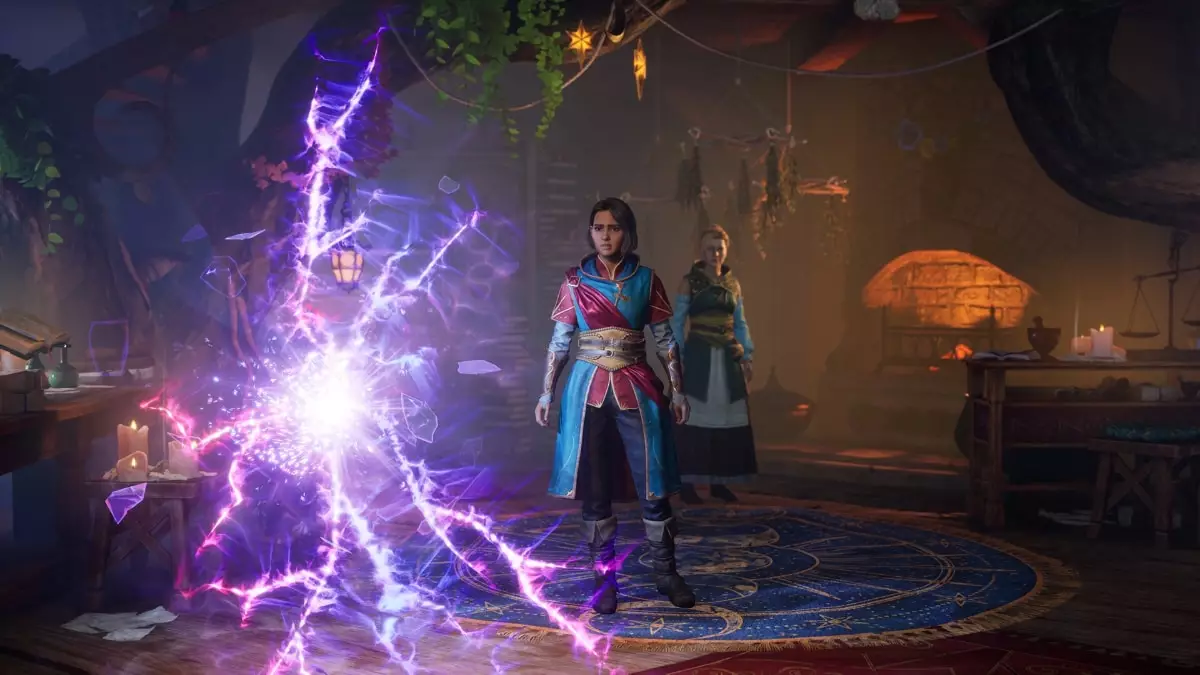In the gaming world, Nintendo has long been known for its unique and often innovative approaches to home and handheld consoles. The impending release of the Nintendo Switch 2 has stirred a flurry of anticipation, especially with the announcement of the co-op game Split Fiction from Electronic Arts. While the inclusion of a GameShare feature heralds a promising ability for gamers to unite over a single title, it also raises a multitude of questions and concerns regarding interoperability, communication, and the strategy behind this console development.
GameShare, as detailed in a recent EA blog post, allows players on the original Switch to connect with those on the Switch 2 using only one copy of a compatible game over local wireless connectivity. Initially, this feature seemed to create a seamless experience where friends could play together regardless of their console generation. However, this notion quickly dissipates upon examining the stipulations that come with it: only games that are *compatible* with the original Switch can be shared via GameShare.
This immediately leads to a contradiction that may leave many baffled. Split Fiction is touted as a launch title for the Switch 2, yet by its very designation, it cannot be played on the original console. In essence, some users are inevitably left out in the cold unless they upgrade their hardware. This compatibility concern exposes the reality of gaming in a rapidly evolving tech landscape where consumers often feel pressured to update regularly or risk being ostracized from the community.
Friend’s Pass: An Innovative Approach or a Poor Substitute?
The introduction of the Friend’s Pass feature further complicates the narrative surrounding Split Fiction. Under this mechanism, players can pair up online, but intriguingly, only one of them needs to purchase the game itself. On the surface, this sounds like a friendly gesture targeting the social aspect that gaming often embodies. However, does this truly reflect a commitment to inclusivity, or does it serve as a way to mask the alienation caused by hardware division?
While it’s commendable that developers are thinking creatively about how to take advantage of online play, this Dual-Ownership model can be deceptive. It may lead consumers to believe they’re fostering community and friendship despite existing barriers created by technological advancements. This might very well backfire; seasoned gamers might find it frustrating to continually adjust their expectations around co-op play in light of the limitations imposed by hardware generations, thereby promoting an unintentional divide among the player base.
Cross-Play: A Ray of Hope or a Fragmented Promise?
Further expanding on the feature set for Split Fiction, EA has touted cross-play capabilities across multiple platforms, including PC, PS5, and Xbox Series S/X. Gamers are increasingly demanding this feature, so it’s gratifying to see that EA is paying attention. Still, the inclusion of cross-play with a caveat—where only Switch 2 owners can engage in cross-play scenarios—opens the floodgates to even more questions.
While it’s laudable that players can connect across platforms, the restriction of cross-play to only one side of the console aisle continues to exacerbate feelings of division. How can gamers trust that competitive fairness will be maintained when access already comes with heavy restrictions? Offering limited access contradicts the expectations of an interconnected universe that modern titles seek to create.
The Price of Progress: A Costly Transition
As we inch closer to the June 5 launch of Split Fiction on the Switch 2, the digital price tag of $49.99 raises eyebrows. To compound the issue, the impending pre-order frenzy starting on April 24 amplifies the feeling of urgency within the gaming sphere. This scenario functions as a microcosm of a larger problem: the relentless commercialization of gaming experiences at the expense of evolved hardware accessibility.
In an era where gaming should feel united with cross-generation compatibility, the reality appears starkly different. Instead, consumers are encouraged to invest heavily in new hardware for relatively fenced-off experiences, while also contending with a model that reeks of limitations.
Nintendo’s historic legacy positions it ideally to shift the narrative towards inclusivity and community. However, as these new features emerge, the question remains: Are they truly forward-thinking, or are they merely a thinly-veiled strategy to orchestrate consumer upgrade cycles? In the face of these implications, one can’t help but wonder what the ultimate goal truly is: game innovation or consumer control?

